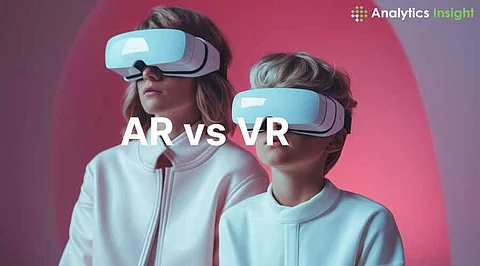

The world of technology is moving at an incredible pace. Augmented Reality and Virtual Reality are the front runners in the revolutionary wave of immersive technologies, which have already started changing industries from gaming to healthcare, education, and retail. Though they are alike, they differ from each other in application as well as influence. Knowing which one holds more potential will help one better understand how they could shape the future.
Augmented Reality overlays digital elements onto the real world. It enriches physical surroundings with interactive graphics, sounds, or other sensory stimuli. The simplest example is the widely played mobile game Pokémon GO, which lets players see virtual creatures in the real environment through their smartphone. AR is versatile and is applied in retail, helping customers make better purchasing decisions with virtual try-ons, and in healthcare, assisting in precise surgeries.
On the other hand, Virtual Reality immerses people completely into totally digital environments. The VR user dons a headset and is able to explore simulated worlds, interact, and even manipulate objects within them. VR is most known for gaming and entertainment purposes, but it also reaches beyond the horizons of education, training simulation, and therapy. Spaces where real-world limitations are broken allow boundless opportunities for innovation.
The strength of AR is that it can blend into everyday life seamlessly. It does not make the user estranged from the real world; instead, it makes the real world better. This makes it the ideal tool for industries requiring real-time physical space interaction.
Retail has embraced AR with open arms. Virtual fitting rooms allow shoppers to try on clothes, glasses, or even furniture without being physically present in stores. This not only enhances the customer experience but also reduces product returns.
In education, AR creates interactive learning environments. Students can visualize historical events or explore the anatomy of the human body in 3D. This approach makes learning more engaging and accessible.
AR has practical applications from manufacturing to maintenance. With the help of AR glasses, technicians get step-by-step guidance or visualize complex systems. It increases efficiency and reduces mistakes.
Virtual Reality is a fully immersive experience, making it perfect for scenarios where users must be removed from the physical world. It stands strongest in gaming, where players may explore fantastical worlds or battle enemies in incredibly real environments.
VR benefits training and education significantly. Medical students train in surgeries in simulated operating rooms, while pilots train in virtual cockpits. These simulations provide hands-on experience without the risks associated with real-life scenarios.
Therapy and mental health care have also begun to embrace VR. Therapists use it to treat patients with phobias, anxiety, or PTSD by exposing them to controlled, virtual environments.
VR does pretty well when it comes to entertainment. Watching a movie, concert, or sport can look much different through VR headsets. People feel they are participants in the action, thus making them more emotionally attached to it.
The possibilities of AR and VR are largely dependent on the applications and the goals that are being pursued. AR is strong at enhancing real-world experiences and, therefore, of paramount importance for the retail, health, and manufacturing industries. The more natural and accessible it seems when applied to daily life, thanks to smartphones and wearable devices.
The boundless creative potential of VR in a fully immersed environment opens up possibilities for users to experience scenarios otherwise impossible in the real world. Therefore, industries such as gaming and entertainment will continue to benefit from the unique capabilities of VR.
Both AR and VR are still in their infancy. They are still developing at a very high pace. Advancements in hardware, software, and connectivity will further propel their use. Lightweight, affordable devices will make these technologies more accessible to an ever-wider audience.
Instead of competing, perhaps AR and VR will complement each other in the future. Mixed Reality, which already promises a seamless interaction between reality and virtualness, speaks for itself at this point.
AR and VR are revolutionizing the way humans interact with technology. AR improves reality by blurring the lines between the physical and digital worlds, whereas VR generates new environments to explore. Both technologies have strengths and unique purposes and will continue to be essential components in most industries of the future, driving the innovation of things yet unknown.
Whether it truly has more potential remains up for debate; however, one thing is sure: just the journey into these environments has only begun.
